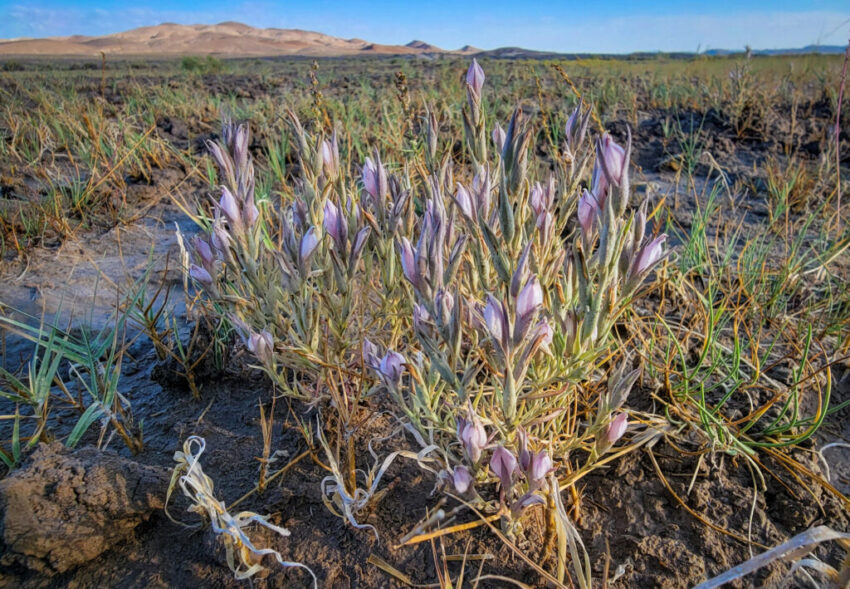Tecopa bird’s beak in wetland habitat in Esmeralda County, Nevada. Photo by Patrick Donnelly/Center for Biological Diversity.
A conservation group is suing the federal government for delaying its decision on whether to list a rare wetland wildflower that grows in Nevada and California as an endangered or threatened species.
The lawsuit, filed by the Center for Biological Diversity, alleges the U.S. Fish and Wildlife Service violated the Endangered Species Act when the agency failed to issue a timely 12-month finding on a petition to list the Tecopa bird’s beak, as required by federal law.
“The agency’s failure to meet the deadline delays crucial, lifesaving protections for Tecopa bird’s beak, increasing its risk of extinction,” the lawsuit reads.
The Tecopa bird’s beak is a rare wildflower that is only known to grow at three alkali wetland sites in western Nevada and eastern California. The plant has pink to pale lavender flowers and relies entirely on shallow groundwater that feeds wetlands in Nevada’s Esmeralda and Nye counties, and California’s Inyo County.
According to the lawsuit, the rare wildflower faces threats from groundwater pumping for agricultural use, geothermal energy development, mining, utility-scale solar development, and residential sprawl.
“As a groundwater-dependent species in the nation’s driest state, the Tecopa bird’s beak is uniquely vulnerable to extinction and needs to be protected,” said Patrick Donnelly, Great Basin director at the Center for Biological Diversity. “The Fish and Wildlife Service has delayed long enough.”
The conservation group filed a petition to list the wildflower under the Endangered Species Act in October 2024, kicking off a yearlong review after the agency signaled the wildflower could potentially qualify for federal protections.
Groundwater levels in Esmeralda County’s Fish Lake Valley, where the rare wildflower grows, have steadily declined due to overpumping. If the groundwater continues to decline, the Tecopa bird’s beak could face extinction, said Donnelly.
The aquifer under Fish Lake Valley feeding the groundwater-dependent wetland ecosystem is heavily over-appropriated, meaning more water is taken out of it than goes into it each year. The aquifer’s water level has dropped two feet a year, the overuse drawing it down 75 feet since the 1960s.
Most of that water has been used to grow alfalfa in the region, a water-intensive crop that primarily feeds cattle in the beef and dairy industries, according to state documents.
The entirety of the plant’s habitat in Fish Lake Valley is allocated for solar energy development under the Bureau of Land Management’s Western Solar Plan, exposing it to development pressures, according to the lawsuit.
“As groundwater levels decline the species will experience reduced vigor, reduced reproductive capacity, and eventually population declines or extirpation,” reads the lawsuit.
Click this link for the original source of this article.
Author: Jeniffer Solis
This content is courtesy of, and owned and copyrighted by, https://www.nevadacurrent.com and its author. This content is made available by use of the public RSS feed offered by the host site and is used for educational purposes only. If you are the author or represent the host site and would like this content removed now and in the future, please contact USSANews.com using the email address in the Contact page found in the website menu.








